
A technophile lawyer rediscovers the joys of pen and paper
Sunday, March 28, 2010
Friday, March 26, 2010
"At least you've got a nice pen"
Sorry to flake on all the new readers this week. I have been absolutely swamped at work all month, and this week took the cake. Trust me, folks, an all-nighter on Sunday night is no way to start your week! (And they're a heck of a lot harder at age 49 than in your college years, I can tell you.)
I've been able to spend maybe an hour a day with my family this week, so the blog took a hit. Anyway . . .
This is going to be another crazy weekend, starting with a drive to the airport to drop off my wife and 8-year old daughter for a visit with her grandparents, then back to the grind to work all weekend and probably one more all-nighter between now and Wednesday. On Friday, I'll get to join my wife and daughter and finally relax a little with them.
Amid all this tumult, I took a few minutes from my work to show my wife — who seems mildly amused by my new-found fetish — the notes I had taken today in Private Reserve Copper Burst, which I just got on Wednesday. A few minutes later, I was ranting and raving about some stupid court rule making my life more difficult. When I was done letting off steam, my wife smiled at me and said, "At least you've got a nice pen."
And a nice wife, don't you think?
So, here's the Copper Burst and the rest of this week's order from Jet Pens:
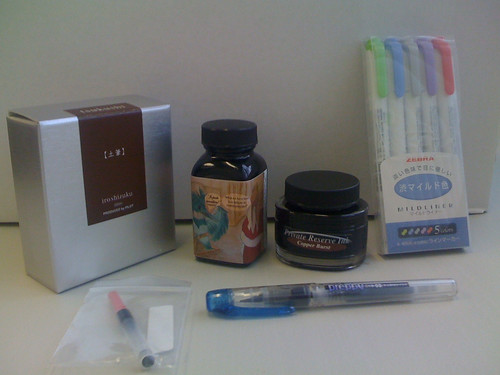
I'm dying to open the Iroshizuku, but I'm so pressed for time, and want to savor it, so I'm saving it for later. Reviews of everything here (except the Lamy converter) lie ahead . . . as time allows.

I've been able to spend maybe an hour a day with my family this week, so the blog took a hit. Anyway . . .
This is going to be another crazy weekend, starting with a drive to the airport to drop off my wife and 8-year old daughter for a visit with her grandparents, then back to the grind to work all weekend and probably one more all-nighter between now and Wednesday. On Friday, I'll get to join my wife and daughter and finally relax a little with them.
Amid all this tumult, I took a few minutes from my work to show my wife — who seems mildly amused by my new-found fetish — the notes I had taken today in Private Reserve Copper Burst, which I just got on Wednesday. A few minutes later, I was ranting and raving about some stupid court rule making my life more difficult. When I was done letting off steam, my wife smiled at me and said, "At least you've got a nice pen."
And a nice wife, don't you think?
So, here's the Copper Burst and the rest of this week's order from Jet Pens:

I'm dying to open the Iroshizuku, but I'm so pressed for time, and want to savor it, so I'm saving it for later. Reviews of everything here (except the Lamy converter) lie ahead . . . as time allows.
"At least you've got a nice pen"
Saturday, March 20, 2010
Ever wish you were the blogger at Pencil Talk?
You may after you see his haul of notebooks from trip to a single store. Where would you start when you got all of them home? Am I the only one booking travel to Toronto as a result of that post?

Ever wish you were the blogger at Pencil Talk?
Hey, Booker, where are all the product reviews? (A review of my first product review)
Since many of you probably found this blog through the The Pen Addict's link to my review of three fine-point gel pens, you may have taken a look around and wondered where all the other product reviews are.
Short answer: they're in my head. I decided after the first review that I may have been a little harsher on the products than I would have been if I had given them a longer test run. So, that's what I've been doing over the last few weeks: trying out products. Every product I plan to review has been getting more prolonged use than the pens in my first review. I'll be able to write reviews based on more experience with the products.
For those of you curious to know whats coming, I'm planning reviews on two fountain pens, five fountain pen inks, two highlighters (that's right, highlighters — unusual, but I'm hardly the first), and seven — count 'em, seven — notebooks. That ought to take me through the end of June.
Along the way, I'll continue to wax philosophical on technology's good and bad and the joys of returning to pen and paper.
Come back soon!

Short answer: they're in my head. I decided after the first review that I may have been a little harsher on the products than I would have been if I had given them a longer test run. So, that's what I've been doing over the last few weeks: trying out products. Every product I plan to review has been getting more prolonged use than the pens in my first review. I'll be able to write reviews based on more experience with the products.
For those of you curious to know whats coming, I'm planning reviews on two fountain pens, five fountain pen inks, two highlighters (that's right, highlighters — unusual, but I'm hardly the first), and seven — count 'em, seven — notebooks. That ought to take me through the end of June.
Along the way, I'll continue to wax philosophical on technology's good and bad and the joys of returning to pen and paper.
Come back soon!
Hey, Booker, where are all the product reviews? (A review of my first product review)
Sunday, March 14, 2010
Thanks, Heather!
Congratulations to Heather of A Penchant for Paper. She's my first "follower" through Google Friend Connect (see the sidebar). Heather wins . . . my gratitude.
Here's hoping you won't stay alone in that sidebar for long, Heather!

Here's hoping you won't stay alone in that sidebar for long, Heather!
Thanks, Heather!
Friday, March 12, 2010
I really picked the wrong time to get into pens
I'd been getting interested in notebooks and pens for a month or two, reading all kinds of blogs and forums. Then I ran across someone's blog post about their visit to a pen show in Philadelphia or somewhere, and thought to myself, "I live 90 minutes from L.A — surely, L.A. must host a pen show!" So I start hunting around on the internet, and it takes maybe 15 seconds before I'm looking at the web page for the 2010 Los Angeles International Pen Show. Yeah!
Except this was about 2 in the morning on the last day of the show. Announcing at the last minute that your wife and child are going to have to spend Sunday without you because you're driving 90 minutes to go look at some pens . . . well, that's not likely to go over very well, is it?
So, I didn't go. But it's on my calendar for next February already!

Except this was about 2 in the morning on the last day of the show. Announcing at the last minute that your wife and child are going to have to spend Sunday without you because you're driving 90 minutes to go look at some pens . . . well, that's not likely to go over very well, is it?
So, I didn't go. But it's on my calendar for next February already!
I really picked the wrong time to get into pens
Thursday, March 11, 2010
The 8th Carnival of Pen, Pencil and Paper
Thanks to Inkophile for pointing me to the 8th Carnival of Pen, Pencil and Paper, hosted by Pocket Blonde. Lots of great links there, including to this article in praise of steel nibs, from which I learned a lot!

The 8th Carnival of Pen, Pencil and Paper
Wednesday, March 10, 2010
Notetaking is notetaking — don't let the laptop lead you astray
Laptop computers have lost some of their classroom lustre. In "Wide Web of diversions gets laptops evicted from lecture halls" at The Washington Post, the writer notes that web-surfing and other distractions have led some professors to ban laptops from their classrooms. Such distractions are not the only problem, however. The other is one of the reasons I started this blog (emphasis mine):
The learning came in the give-and-take between professors and students, and the time to write something down was at the "ah-ha moment" — the point where that give-and-take caused the light bulb to light up over your head, and you got the point. You're likely to miss that if you're trying to capture every word along the way. That's true whether you're taking notes with a Macintosh or a Montblanc.
But because it's easier for many students to capture every word with a computer than with a pen, the mere fact that they have a computer in front of them tempts them to do it. A student with pen knows he's not going to get every word (unless he knows shorthand), so I believe he has a greater tendency to listen and think, writing down only those things that will help him remember the key points.
This general problem — substituting speed for thought — extends far beyond the classroom, though, and I'll be writing more about it in the future.

Cole has banned laptops from his classes, compelling students to take notes the way their parents did: on paper.The point about laptops removing students (at least partially) from classroom discussion and turning students into "witless stenographers" is a perfect illustration of how I think the speed of our communication technology can encourage people to stop thinking. In nearly all of my law school classes — and I know this might not be true for other academic disciplines — you could go for minutes at a time without writing anythng down, and still take great notes.
***
Cole surveyed one of his Georgetown classes anonymously after six weeks of laptop-free lectures. Four-fifths said they were more engaged in class discussion. Ninety-five percent admitted that they had used their laptops for "purposes other than taking notes."
Even when used as glorified typewriters, laptops can turn students into witless stenographers, typing a lecture verbatim without listening or understanding.
The learning came in the give-and-take between professors and students, and the time to write something down was at the "ah-ha moment" — the point where that give-and-take caused the light bulb to light up over your head, and you got the point. You're likely to miss that if you're trying to capture every word along the way. That's true whether you're taking notes with a Macintosh or a Montblanc.
But because it's easier for many students to capture every word with a computer than with a pen, the mere fact that they have a computer in front of them tempts them to do it. A student with pen knows he's not going to get every word (unless he knows shorthand), so I believe he has a greater tendency to listen and think, writing down only those things that will help him remember the key points.
This general problem — substituting speed for thought — extends far beyond the classroom, though, and I'll be writing more about it in the future.
Notetaking is notetaking — don't let the laptop lead you astray
Sunday, March 7, 2010
Fine Point Face-Off! Pilot Hi-Tec C 0.25mm vs. Uniball Signo DX 0.28mm vs. Pentel Slicci 0.25mm
UPDATE
3/20/10: Greetings, The Pen Addict readers, and many thanks to The Pen Addict for the link! It provided quite the traffic spike to this young blog, making me feel somewhat like Navin R. Johnson felt like the first time he saw his name in the phone book (before things went sour). Some people who missed the link today will probably hit it tomorrow; after all, notebook and pen enthusiasts seem to me to be likely participants in today's National Day of Unplugging.
ORIGINAL POST
On some forum or another a couple of weeks ago, I saw members setting forth their favorite fine-tip gel pens. The thread was started by a proponent of the Pilot Hi-Tec C. Pretty soon, people started chiming in, and it became clear that there were three pens vying for the title of best fine point gel pen: the Pilot Hi-Tec C 0.25mm, the Pentel Slicci 0.25mm, and the Uni-Ball Signo DX UM-151 0.28mm.
I like fine tipped pens because I happen to write rather small, but I'd never written with pens with such fine tips before (to me, "fine" always meant 0.5mm), so I figured: why not include one of each in my first Jet Pens order and do a comparative review? Well, here it is!
This is my first pen review, and I was surprised at just how much I have to say about these three. It used to be that a pen "felt good" or didn't, and that was about as far as my opinion went. This is my first stab at evaluating details, and you're likely to see my reviews evolve over time, as I find some characteristics to fade in importance and others to increase. Anyway, here goes.
Here they are laid out next to each other:
First Impressions
The Hi-Tec and Signo DX are both a little shy of 6" capped, the Slicci a little bit shorter. The Slicci is noticeably thinner, and its ink tube is not only thinner but seemed to have a shorter line of ink in it, making me wonder if it would run out faster than either of the other pens. I won't be writing with it long enough to find out though, for reasons you'll read below. (The Signo DX ink line in the tube also looked shorter than in the Hi-Tec, but most of that is made up in how much further toward the capped end the tip of the Signo extends. The tip is noticeably to the right of the Hi-Tec C's tip in the photo.)
Comfort
The Signo DX is the only one of the three to offer a cushioned grip, which would be nice, if it helped me. But I find that I grip my pens too close to the tip for most cushioned grips to do me much good (i.e. I grip the pen at least partially below the cushion), and the Signo DX was no different in this regard.
Still,
the Signo DX was the most comfortable of the three to grip because the
cushion made for a wider barrel than either of the other two. The Slicci
was the least comfortable to hold. It's so thin, it felt like I was
writing with a Tootsie Pop stick.
Somehow, this caused me to try to grip it tighter. I can see myself
cramping my hand or at least getting very fatigued if I tried to write
with the Slicci for an extended period. The Hi-Tec C was just there,
not particularly comfortable or uncomfortable, but the ridges in the
plastic that serve as a grip strike me as unnecessary.
"Comfort" is a relative term when it comes to writing with these three pens, because the sad fact is that I didn't like the feel of any of them. The only pen I can see myself using much in the future (and that's pretty much just so it won't go to waste) is the Signo DX, and then only with certain papers.
I tried each of these pens out on six different papers: 20-lb. multi-purpose paper from Office Depot, a Tops Docket Gold legal pad, a large Piccaddilly notebook, an extra-large Moleskine Cahier, an A4 squared Whitelines, and a staple-bound, French-ruled Clairefontaine. With few exceptions, the writing felt exceptionally scratchy. The upstrokes felt like I was etching the paper rather than writing on it, and made a lot of noise. I kept thinking that the tip was better suited to etch serial numbers on diamonds than to write in my notebooks. Admittedly, however, this could be due as much or more to my heavy hand as to the mechanics of the pen tip.
The Slicci was the worst in this regard. Maybe my stronger grip on this then pen also translated unconsciously into greater application of pressure to the paper. I'm not sure. All I know is that even on the 90 gsm Clairefontaine paper, it was scratchy. The Hi-Tec C was not much better on most papers. The only pen and paper combinations I could see using over the long haul were the Signo DX on either the Clairefontaine or the Moleskine. (I know, I know, everyone says Moleskine paper is terrible, but what can I tell ya, I felt what I felt, and the Signo DX wrote much more smoothly in the Mole than in the Piccadilly.)
I don't know if the slightly smoother feel of the Signo DX is due to the extra 3/100ths of a millimeter in the width of its tip, the quality of the ink, or even the fact that the Signo DX had blue-black ink instead of blue ink like the other two. It did, however, provide a noticeably smoother delivery of ink than the other two.
I find it interesting how my evaluation differs from others. Office Supply Geek found the 0.25mm Hi-Tec C to write "smoothly." Pen Addict liked the Hi-Tec, but didn't comment on the smoothness of the writing. He did, however, note that the 0.28mm Signo DX was "scratchier" than the slightly wider-tipped 0.38mm version. On the other hand, he thought the 0.25mm Slicci has the "smooth writing ability" of its 0.5mm model. Something Random noted that even the 0.38mm Signo DX was difficult to write quickly with if you're used to a 0.7mm pen.
I don't know if the slightly smoother feel of the Signo DX is due to the extra 3/100ths of a millimeter in the width of its tip, the quality of the ink, or even the fact that the Signo DX had blue-black ink instead of blue ink like the other two. It did, however, provide a noticeably smoother delivery of ink than the other two.
I find it interesting how my evaluation differs from others. Office Supply Geek found the 0.25mm Hi-Tec C to write "smoothly." Pen Addict liked the Hi-Tec, but didn't comment on the smoothness of the writing. He did, however, note that the 0.28mm Signo DX was "scratchier" than the slightly wider-tipped 0.38mm version. On the other hand, he thought the 0.25mm Slicci has the "smooth writing ability" of its 0.5mm model. Something Random noted that even the 0.38mm Signo DX was difficult to write quickly with if you're used to a 0.7mm pen.
Performance
It would be unfair form me to downgrade these pens on performance just because they're not well-suited for what I do. I have to give them uniformly good grades for doing what they are supposed to do: write a clear, consistent, and really, really thin line.
It's obvious from the above photo that the pens would write a thin line. However, due to the scratchy feeling of writing with the pens, it felt like the ink flow would be less than consistent. I won't bore you with an extended writing sample, but here's a one-line comparison of the line left by each pen in a Moleskine Cahier, showing a very consistent line from all three:
I found the color from the Signo DX to be most pleasing, but it's not a fair comparison. It is a blue-black, while the others are straight blues.
Now, a comment on feathering and bleeding seems almost obligatory in a pen review, but I'll not bother here. If these inks feather or bleed at all, it's in proportion to the width of the lines they lay down. That not only makes it invisible to the naked eye, it probably requires a microscope instead of a loupe to see it.
Finally, I was pleased that, contrary to my expectations, writing with these fine tips did not cause indentations that showed through to the other side of any paper in the tests. I thought that the extremely fine tip on these would leave deep impressions, but I'm beginning to think that I eased up on the pressure in response to the scratchiness, and thus caused less of an impression than I get with my extremely smooth 0.50mm Ohto Orca ceramic rollerball (which I should be reviewing in about a week).
Finally, I was pleased that, contrary to my expectations, writing with these fine tips did not cause indentations that showed through to the other side of any paper in the tests. I thought that the extremely fine tip on these would leave deep impressions, but I'm beginning to think that I eased up on the pressure in response to the scratchiness, and thus caused less of an impression than I get with my extremely smooth 0.50mm Ohto Orca ceramic rollerball (which I should be reviewing in about a week).
Suitability for Attorneys
Here's where the review gets most personal. Though these pens are good at doing what they're supposed to do, they're no good for what I need to do.
As a litigation attorney, my handwriting is usually one of three things: editing a draft document, writing down notes (from research, a meeting, or a phone call), and signing things. I didn't find any of these pens very suitable for any of these.
First, the obvious. For signing a document, you want a bold line. My signature doesn't take up half the page like the signatures of many attorneys -- all the more reason that the line has to be bold. You need to be able to see whether or not I've signed something, and the line laid down by these pens is so thin that the existence of my signature, which is quite small, may require a double take.
Second, for the same reasons, I don't find these pens good for marking up drafts. My assistant needs to be able to see where I have marked up a document, and these lines don't jump out from the page, at least not in these hues, (Pen Hunter tested many more colors and said that they "stand out on the page" even in the 0.25 tip width.) They actually jump out much more clearly in this photograph than they do when the actual page is in front of you. So, I've added a reference notation from a Platinum Preppy fountain pen with fine nib:
By now, you're probably thinking I must be half blind because of the difficulty I have seeing these lines. But trust me, they are much more visible in the photo than they are when looking at the original marked-up page.
Third, these pens are unsuitable for my general notetaking because of the audible scratchiness I noted above. I can even envision the noise from the scratching being a distraction to others in a meeting or at the library.
For other kinds of attorneys -- patent attorneys, perhaps, who may need to annotate detailed schematic drawings -- these thin writers may fit the bill quite nicely.
My use will probably be limited to using the Signo DX for my GTD weekly reviews, since I'll be doing those in the Cahier and the Signo DX/Cahier combination provided the smoothest feel. The Slicci and Hi-Tec C will be going in a pen cup in the firm's file room.
My use will probably be limited to using the Signo DX for my GTD weekly reviews, since I'll be doing those in the Cahier and the Signo DX/Cahier combination provided the smoothest feel. The Slicci and Hi-Tec C will be going in a pen cup in the firm's file room.
Bottom Line
These pens are great fine-line performers, but take more getting used to than I'm likely to be able to accomplish. If a thin line is your main need and you don't mind the audible scratchiness of the fine tip (or have a light hand that mitigates it), these ought to be right up your alley.
Fine Point Face-Off! Pilot Hi-Tec C 0.25mm vs. Uniball Signo DX 0.28mm vs. Pentel Slicci 0.25mm
Wednesday, March 3, 2010
The dilemma of choosing that first notebook
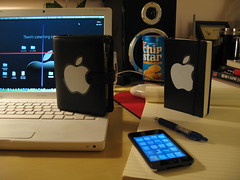 Image by ♥ China ♥ guccio via Flickr
Image by ♥ China ♥ guccio via FlickrI got into notebooks through GTD. Many GTDers are Moleskine fanatics. So when I started looking for Moleskines online, I started running into so many other notebooks and blogs about them, I could hardly wait to try each and every one of them. It will take me years to work through the possibilities, but I want to try them all now.
Some people get around this dilemma by using lots of notebooks at the same time. At the Notebook Stories blog, Nifty explains his current setup and concludes:
So that comes to 7 or 8 notebooks with some degree of active usage right now. It almost doesn’t seem like enough to make me a true notebook addict… maybe I should start a few more!OK, so if it's good enough for veteran notebooker Nifty, it's good enough for me, right? I wish.
I have a multiple-notebook setup right now, but I have to be careful, because some of them serve as "capture tools" in this Getting Things Done workflow I'm trying to implement. A capture tool is anything you use to capture a thought as it occurs to you so you can return to it later and process it, i.e., integrate the idea into your project lists and action lists. Capture tools, like other "collection buckets," must be emptied regularly and frequently for the GTD system to work. (Keep in mind, I'm parroting the book here; I'm just getting started on my GTD implementation, and thus can't speak from experience.) And, since you need to trust that you'll do so, you have to be careful about having too many of them.
With that in mind, here is my current set-up, likely to change many times in the coming weeks and months:
Moleskin Cahier, pocket, ruled (bottom right) - this is the capture tool I keep with me all the time — all the time —to capture thoughts, write down phone numbers, jot down a quick instruction from a client, etc., while on the go. To make sure I always have a pen handy, I keep a Fischer Trekker space pen on a lanyard around my neck.
Large Piccadilly ruled (top left) - this is my general notetaking notebook for work (another capture tool). It stays on my desk all day, goes with me when I visit a client or go to court. I use it to record the progress of my day: time spent on client projects, tasks performed, expenses, and notes from meetings and court appearances.
Whitelines Perfect Bound A4 Squared (top middle) - This is where I keep legal research notes. If I'm looking up the law, this is where I write down what I've found. Since that research translates into tasks (like adding certain authorities to letters, briefs, or memoranda, or perhaps telling a client or another attorney about my findings), this is also a capture tool that I must make sure I "process" regularly.
Moleskine Cahier, large, ruled (bottom left) - this tucks nicely inside the back cover of my copy of David Allen's Getting Things Done. I use it exclusively for notes from the book. This notebook serves partly as a memory aid (since I find writing things down makes them more memorable) and party as a capture tool (since some of those notes require follow-up actions to implement GTD.)
Moleskine Cahier, x-large, ruled (top right) - I use this notebook exclusively for my GTD weekly review. Or, I should say I intend to use this book exclusively for my weekly review. The weekly review is a big stumbling point for GTD practitioners, so I'm hoping that a log of weekly reviews will make doing the weekly review a more attractive prospect, and that having a history of my weekly reviews in one notebook will come in handy.
Clairefontaine A4 French-ruled staple bound - I'm still waiting for this eBay purchase (similar to this one). This will be my handwriting journal, where I will practice writing to develop my cursive writing skills. The idea here is that the French ruling is supposed to aid writing skills and keeping track of my progress in a single notebook will give me a better visual picture of my progress (or lack thereof). Since this doesn't act as a capture tool, I don't have to be concerned about this being one capture tool too many.
There are still more I want to try, but I think I've got enough on my plate!
The dilemma of choosing that first notebook
Subscribe to:
Posts (Atom)
![Reblog this post [with Zemanta]](http://img.zemanta.com/reblog_e.png?x-id=18d919a0-7387-4d00-b876-f63fe8e537fd)
![Reblog this post [with Zemanta]](http://img.zemanta.com/reblog_e.png?x-id=e7cb23be-16d7-45a0-b457-9de86a6ea0ca)

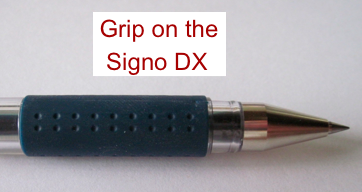
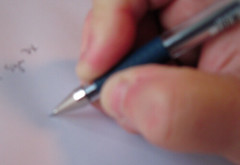
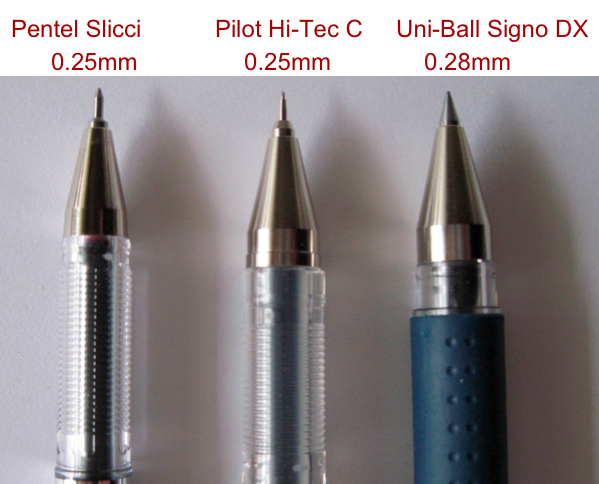

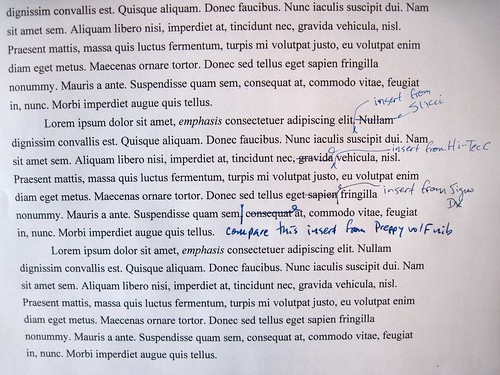

![Reblog this post [with Zemanta]](http://img.zemanta.com/reblog_e.png?x-id=c97d20fe-3c0b-4f4f-9f2e-9796e96f9186)

